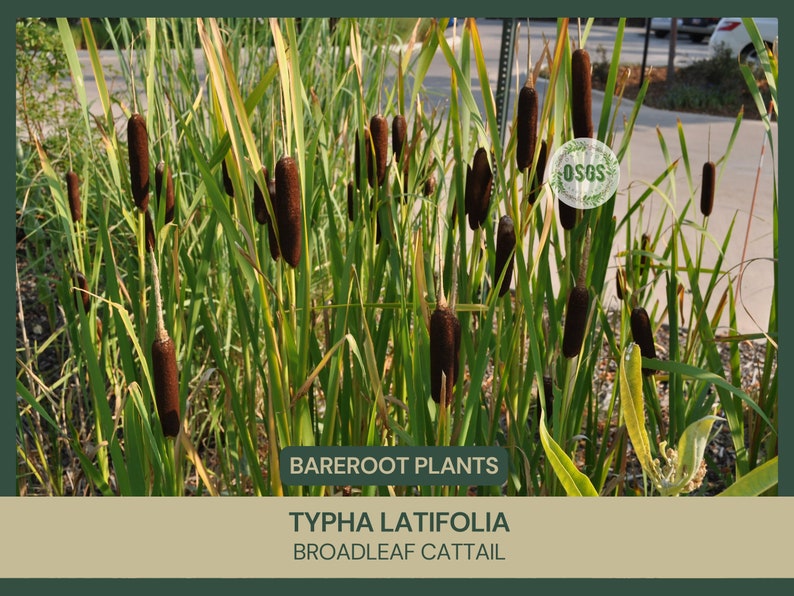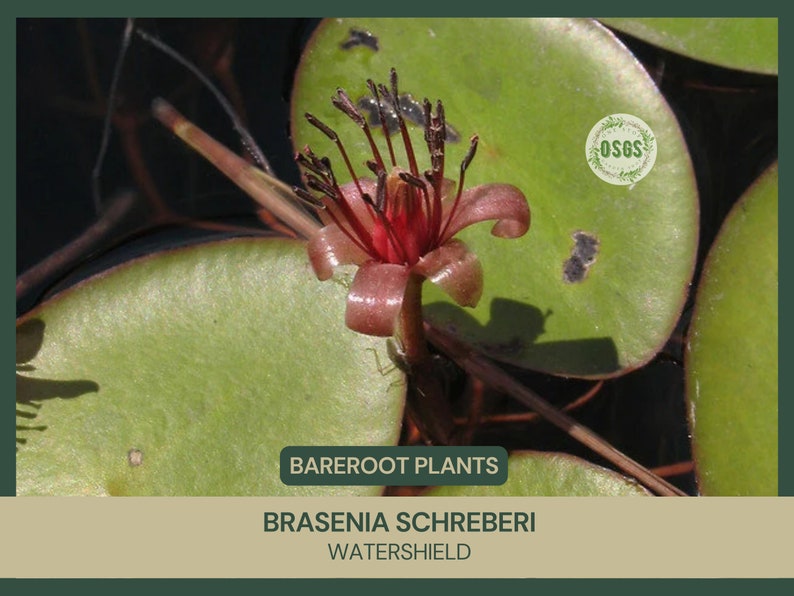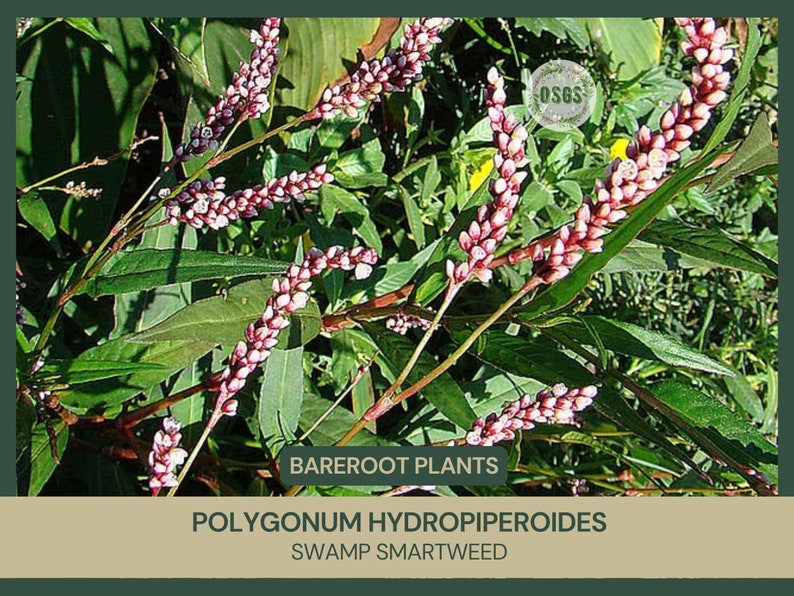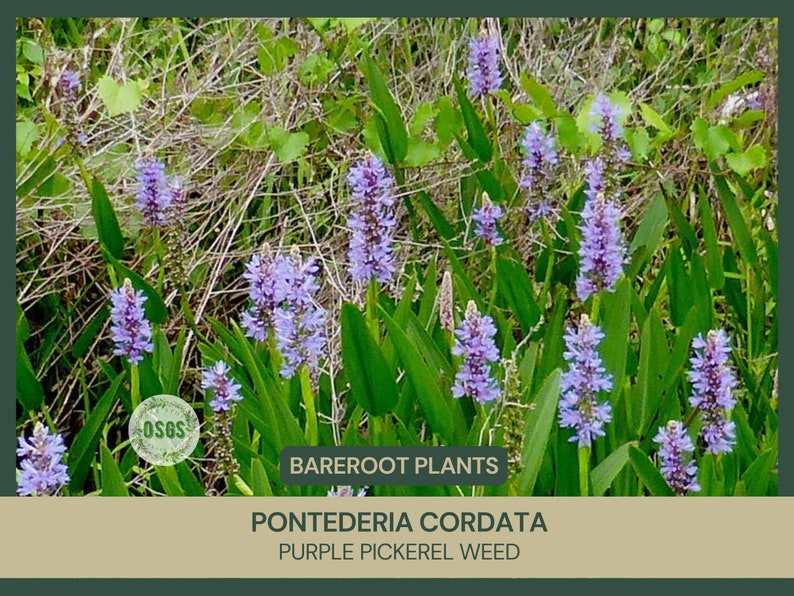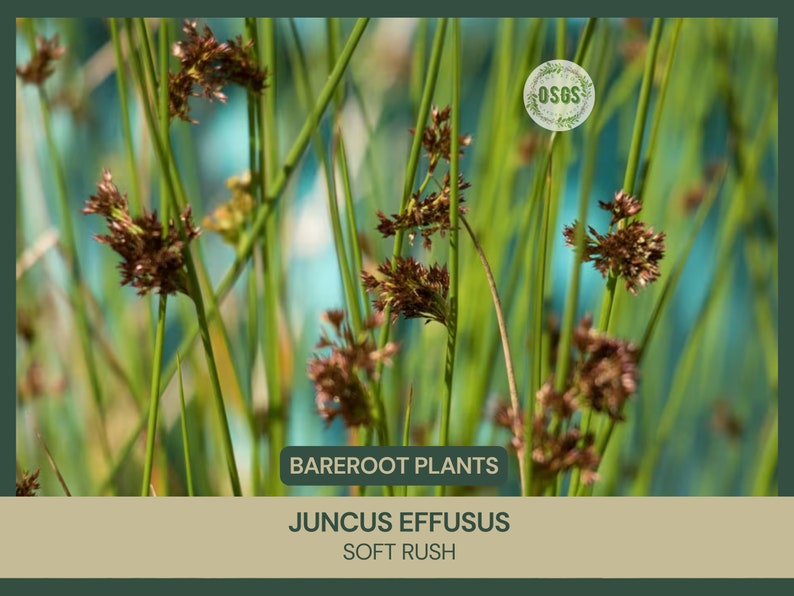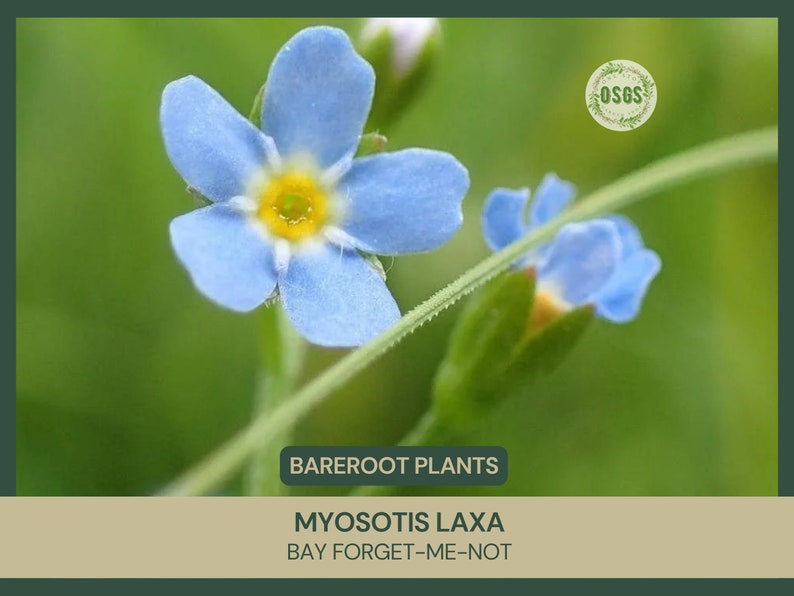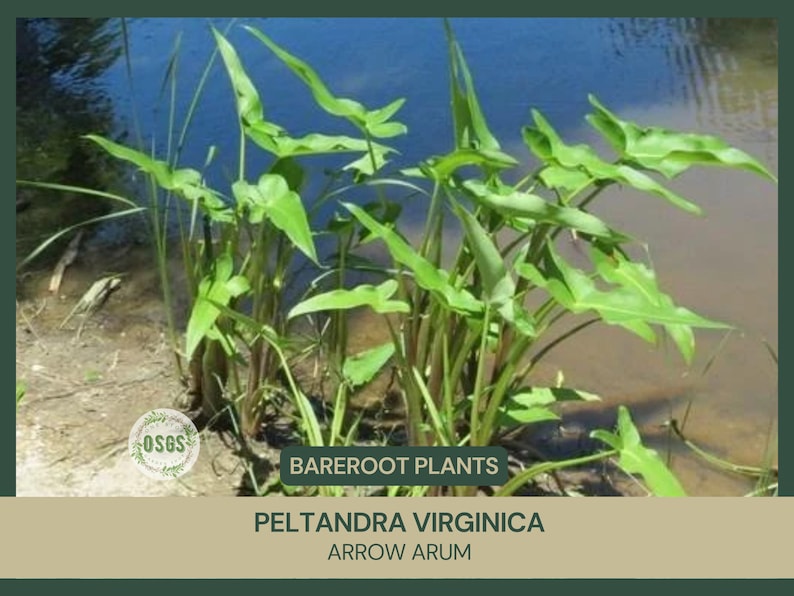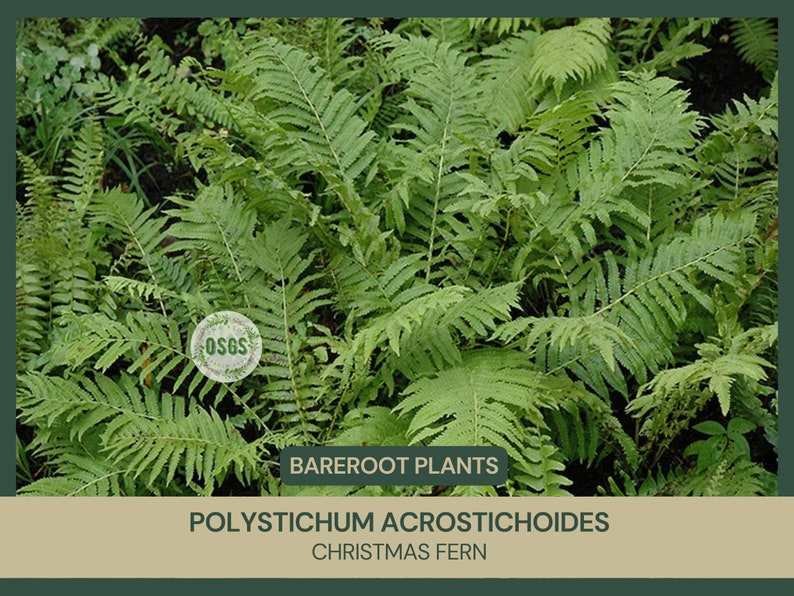Search Results
297 results found with an empty search
- Equisetum arvense
<<< Back Message us Related Videos Etsy Shop eBay Shop Equisetum arvense, commonly known as Field Horsetail, is a resilient and prehistoric plant valued for its unique, jointed stems and timeless charm. This perennial adds a touch of elegance to gardens, borders, and water features, creating a visually appealing and distinctive landscape reminiscent of ancient times. ● Features jointed, bamboo-like stems with a vertical, columnar growth habit, providing a prehistoric aesthetic. ● Flourishes in a variety of soil conditions, adapting well to both moist and well-drained garden environments. ● Offers both architectural and ornamental value, adding a touch of timeless charm to garden designs. Plant Care Effective care is fundamental for the healthy growth and timeless charm of Field Horsetail. ● Sunlight: Thrives in full sun to partial shade, adapting well to varying light conditions in garden settings. ● Soil: Plant in a range of soil types, from moist to well-drained, emulating its versatile natural habitat. ● Watering: Maintain consistent soil moisture, as Field Horsetail prefers damp to wet conditions. ● Spacing: Plant horsetail approximately 12-24 inches apart to allow for its vertical growth habit. ● Fertilizing: Minimal fertilization is necessary; horsetail generally thrives without heavy nutrient inputs. Planting and Propagation Planting and propagating Field Horsetail contribute to the timeless charm of garden landscapes. ● Plant in early spring or early fall for optimal establishment. ● Propagate through division, separating rhizomes, during the active growing season. ● Allow for natural self-spreading for additional horsetail in subsequent growing seasons. Pests and Diseases Field Horsetail is generally hardy, but vigilance against potential issues is essential. ● Monitor for pests like aphids or spider mites; use organic remedies if necessary. ● Disease resistance is high, but proper air circulation helps prevent fungal problems. ● Avoid over-fertilizing to maintain the natural and timeless charm of the horsetail. Feeding and Fertilizing Minimal feeding is recommended for Field Horsetail to preserve its distinctive appearance. ● Use a balanced, all-purpose fertilizer sparingly, if necessary, in early spring. ● Over-fertilization can lead to excessive growth, potentially diminishing the plant's architectural form. Varieties and Cultivars Explore different varieties of Field Horsetail for potential variations in height and stem thickness. ● Varieties may exhibit differences in overall size, stem color, or growth habit. ● Experiment with different cultivars to create a visually stunning and diverse display of timeless garden charm. Growing Tips and Tricks Additional tips ensure a thriving garden landscape with Field Horsetail. ● Monitor soil moisture levels, adjusting watering frequency based on weather conditions. ● Consider companion planting with other architectural plants for a harmonious and visually interesting garden. ● Embrace the vertical growth habit of horsetail while managing potential overgrowth to maintain its timeless charm. Troubleshooting Common Problems Proactive troubleshooting can maintain the health and timeless charm of Field Horsetail. ● Yellowing stems may indicate nutrient deficiencies or poor soil drainage. ● Spider mites or aphids may be present during dry periods; address promptly with organic solutions. ● Regularly remove debris and decaying plant material to prevent potential pest habitats and maintain a pristine appearance in the garden Read our blogs for more gardening tips! Edible Wetland Plants in Traditional and Indigenous Cuisines Introduction to Edible Wetland Plants in Traditional and Indigenous Cuisines Edible Wetland Plants have long been a cornerstone in... Community Involvement in Wetland Conservation: Starting a Local Initiative Understanding the Value of Wetlands Wetlands, those lush interfaces between land and water, are not just beautiful facets of our natural... Flower Structures of Common Native Flowers Flower Structures of Common Native Flowers Native flowers are more than just a splash of color in our landscapes; they are a vital part... Seasonal Changes and Plant Dormancy I'M NOT DEAD, JUST DORMANT! The rhythm of the natural world is deeply influenced by the changing seasons, dictating the life cycle of... Leaf Shapes in Native Plant Identification Identifying native plants is a fascinating and vital skill, especially for botanists, gardeners, and nature enthusiasts. One of the most...
- Typha latifolia
<<< Back Message us Related Videos Etsy Shop eBay Shop Read our blogs for more gardening tips! Edible Wetland Plants in Traditional and Indigenous Cuisines Introduction to Edible Wetland Plants in Traditional and Indigenous Cuisines Edible Wetland Plants have long been a cornerstone in... Community Involvement in Wetland Conservation: Starting a Local Initiative Understanding the Value of Wetlands Wetlands, those lush interfaces between land and water, are not just beautiful facets of our natural... Flower Structures of Common Native Flowers Flower Structures of Common Native Flowers Native flowers are more than just a splash of color in our landscapes; they are a vital part... Seasonal Changes and Plant Dormancy I'M NOT DEAD, JUST DORMANT! The rhythm of the natural world is deeply influenced by the changing seasons, dictating the life cycle of... Leaf Shapes in Native Plant Identification Identifying native plants is a fascinating and vital skill, especially for botanists, gardeners, and nature enthusiasts. One of the most...
- Brasenia schreberi
<<< Back Message us Related Videos Etsy Shop eBay Shop Brasenia schreberi, commonly known as Watershield, is a unique aquatic plant celebrated for its floating leaves and tranquil presence. This perennial is an excellent addition to water gardens, ponds, and other aquatic environments, enhancing the natural beauty of these landscapes. ● Features floating, elliptical leaves with a distinctive purple underside. ● Thrives in calm, freshwater environments, creating a serene and natural ambiance. ● Offers habitat and shelter for aquatic organisms, contributing to ecosystem balance. Plant Care Effective care is fundamental for the healthy growth and tranquility of Watershield. ● Sunlight: Prefers full sun to partial shade for optimal growth and vibrant leaf color. ● Soil: Plant in nutrient-rich, muddy substrates to mimic its natural aquatic habitat. ● Watering: Maintain a consistent water level; Watershield flourishes in a stable aquatic environment. ● Spacing: Plant Watershield approximately 24 inches apart to allow for its spreading nature. ● Fertilizing: Apply a balanced aquatic fertilizer in early spring to support leaf development. Planting and Propagation Planting and propagating Watershield contribute to the flourishing of your water garden. ● Plant in late spring or early summer when water temperatures are favorable. ● Propagate through division, separating rhizomes, during the active growing season. ● Seeds can be collected and sown in the mud for natural propagation. Pests and Diseases While Watershield is generally hardy, vigilance against potential issues is essential. ● Monitor for pests like water beetles or aphids; use aquatic-safe treatments if necessary. ● Disease resistance is high, but maintaining water quality helps prevent fungal problems. ● Avoid over-fertilizing to prevent nutrient imbalances in aquatic environments. Feeding and Fertilizing Regular feeding supports the growth of Watershield but should be done with care. ● Use a slow-release aquatic fertilizer in early spring for sustained nutrient availability. ● Over-fertilization can lead to excessive leaf growth, disrupting the natural balance of the water. Varieties and Cultivars Explore different varieties of Watershield for diverse leaf shapes and sizes in your water garden. ● Varieties may exhibit variations in leaf color, size, or texture. ● Mix and match cultivars to create a visually stunning and diverse aquatic display. Growing Tips and Tricks Additional tips ensure a thriving water garden with Watershield. ● Choose a location with minimal water movement to maintain the plant's floating habit. ● Regularly monitor water quality, especially nutrient levels, to ensure a healthy aquatic environment. ● Consider companion planting with other aquatic plants for a harmonious and vibrant water garden. Troubleshooting Common Problems Proactive troubleshooting can maintain the health and tranquility of Watershield. ● Yellowing leaves may indicate nutrient deficiencies or poor water quality. ● Sparse growth may result from insufficient sunlight or overcrowding. ● Regularly remove debris and decaying leaves to prevent water contamination and maintain a pristine appearance. Read our blogs for more gardening tips! Edible Wetland Plants in Traditional and Indigenous Cuisines Introduction to Edible Wetland Plants in Traditional and Indigenous Cuisines Edible Wetland Plants have long been a cornerstone in... Community Involvement in Wetland Conservation: Starting a Local Initiative Understanding the Value of Wetlands Wetlands, those lush interfaces between land and water, are not just beautiful facets of our natural... Flower Structures of Common Native Flowers Flower Structures of Common Native Flowers Native flowers are more than just a splash of color in our landscapes; they are a vital part... Seasonal Changes and Plant Dormancy I'M NOT DEAD, JUST DORMANT! The rhythm of the natural world is deeply influenced by the changing seasons, dictating the life cycle of... Leaf Shapes in Native Plant Identification Identifying native plants is a fascinating and vital skill, especially for botanists, gardeners, and nature enthusiasts. One of the most...
- Matteucccia struthiopteris
<<< Back Message us Related Videos Etsy Shop eBay Shop Matteucccia struthiopteris, commonly known as Ostrich Fern, is a deciduous perennial admired for its feathery fronds and elegant, arching form. This woodland beauty adds a touch of natural grace to shaded gardens, woodland landscapes, and moist areas, creating a visually majestic and enchanting environment. ● Features large, fern-like fronds that unfurl in a distinctive, ostrich plume-like manner. ● Flourishes in consistently moist, well-drained soils, thriving in the dappled shade of woodlands and shaded garden spaces. ● Offers both ornamental value and habitat support, providing shelter for small animals and contributing to the allure of woodland ecosystems. Plant Care Effective care is fundamental for the healthy growth and majestic beauty of Ostrich Fern. ● Sunlight: Thrives in partial to full shade, adapting well to shaded and woodland environments. ● Soil: Plant in rich, well-drained soil with organic matter for optimal growth. ● Watering: Maintain consistently moist soil, especially during the growing season, to support vigorous frond development. ● Spacing: Plant Ostrich Fern approximately 18-24 inches apart to allow for its expansive and arching growth habit. ● Fertilizing: Minimal fertilization is necessary; Ostrich Fern generally thrives without heavy nutrient inputs. Planting and Propagation Planting and propagating Ostrich Fern contribute to the majestic beauty of woodland landscapes. ● Plant in early spring or early fall for optimal establishment. ● Propagate through division in spring, ensuring each division has healthy roots and a portion of the rhizome. ● Allow for natural self-spreading for additional Ostrich Ferns in subsequent growing seasons. Pests and Diseases Ostrich Fern is generally hardy, but vigilance against potential issues is essential. ● Monitor for pests like slugs or snails; use organic remedies if necessary. ● Disease resistance is high, but proper spacing and good air circulation help prevent fungal problems. ● Avoid over-fertilizing to maintain the natural and majestic beauty of Ostrich Fern. Feeding and Fertilizing Minimal feeding is recommended for Ostrich Fern to preserve its delicate appearance. ● Use a balanced, slow-release fertilizer sparingly, if necessary, in early spring. ● Over-fertilization can lead to excessive growth, potentially diminishing the plant's natural form. Varieties and Cultivars Explore different varieties of Ostrich Fern for potential variations in frond size and color. ● Varieties may exhibit differences in overall height, frond shape, or growth habit. ● Experiment with different cultivars to create a visually stunning and diverse display of majestic beauty in woodland gardens. Growing Tips and Tricks Additional tips ensure a thriving woodland landscape with Ostrich Fern. ● Monitor soil moisture levels, adjusting watering frequency based on weather conditions. ● Consider companion planting with other shade-loving plants for a harmonious and visually interesting woodland garden. ● Embrace the expansive and arching growth habit of Ostrich Fern while managing potential overgrowth to maintain its majestic beauty. Troubleshooting Common Problems Proactive troubleshooting can maintain the health and majestic beauty of Ostrich Fern. ● Yellowing fronds may indicate nutrient deficiencies or poor soil drainage. ● Regularly remove debris and decaying plant material to prevent potential pest habitats and maintain a pristine appearance in woodland areas. ● Ensure proper spacing to prevent overcrowding and allow for optimal air circulation, reducing the risk of fungal issues. Read our blogs for more gardening tips! Edible Wetland Plants in Traditional and Indigenous Cuisines Introduction to Edible Wetland Plants in Traditional and Indigenous Cuisines Edible Wetland Plants have long been a cornerstone in... Community Involvement in Wetland Conservation: Starting a Local Initiative Understanding the Value of Wetlands Wetlands, those lush interfaces between land and water, are not just beautiful facets of our natural... Flower Structures of Common Native Flowers Flower Structures of Common Native Flowers Native flowers are more than just a splash of color in our landscapes; they are a vital part... Seasonal Changes and Plant Dormancy I'M NOT DEAD, JUST DORMANT! The rhythm of the natural world is deeply influenced by the changing seasons, dictating the life cycle of... Leaf Shapes in Native Plant Identification Identifying native plants is a fascinating and vital skill, especially for botanists, gardeners, and nature enthusiasts. One of the most...
- Polygonum hydropiperoides
<<< Back Message us Related Videos Etsy Shop eBay Shop Polygonum hydropiperoides, commonly known as Swamp Smartweed, is an aquatic perennial celebrated for its slender spikes of pink flowers and adaptability to wetland environments. This water-loving plant enhances the lush beauty of wetlands, pond margins, and water gardens, adding a touch of charm and ecological significance. ● Features lance-shaped leaves and graceful spikes of pink flowers, creating a visually captivating display in wetland settings. ● Flourishes in consistently wet to submerged soils, showcasing adaptability and resilience. ● Offers both ornamental value and habitat support, contributing to the vibrancy and biodiversity of wetland ecosystems. Plant Care Effective care is fundamental for the healthy growth and aquatic charm of Swamp Smartweed. ● Sunlight: Adapts well to full sun or partial shade, thriving in the varied light conditions of wetland landscapes. ● Soil: Plant in well-drained aquatic soil or directly in submerged conditions, ensuring proper anchoring. ● Watering: Maintain consistently wet to submerged soil conditions to support vigorous growth. ● Spacing: Plant Swamp Smartweed with a spacing of about 12-18 inches to allow for its spreading growth habit. ● Fertilizing: Minimal fertilization is necessary; Swamp Smartweed generally thrives without heavy nutrient inputs. Planting and Propagation Planting and propagating Swamp Smartweed contribute to the aquatic charm of water-centric environments. ● Plant in early spring or early fall for optimal establishment. ● Propagate through division of rhizomes or stem cuttings, ensuring each division has healthy roots and buds. ● Allow for natural self-spreading for additional Swamp Smartweeds in subsequent growing seasons. Pests and Diseases Swamp Smartweed is generally hardy, but vigilance against potential issues is essential. ● Monitor for pests like aphids or waterborne insects; use organic remedies if necessary. ● Disease resistance is high, but proper water circulation helps prevent fungal problems. ● Avoid over-fertilizing to maintain the natural and aquatic charm of Swamp Smartweed. Feeding and Fertilizing Minimal feeding is recommended for Swamp Smartweed to preserve its delicate appearance. ● Use a slow-release aquatic fertilizer sparingly, placing it near the roots in early spring. ● Over-fertilization can lead to excessive growth, potentially diminishing the plant's natural form. Varieties and Cultivars Explore different varieties of Swamp Smartweed for potential variations in flower color and leaf size. ● Varieties may exhibit differences in overall height, flower shape, or growth habit. ● Experiment with different cultivars to create a visually stunning and diverse display of aquatic charm in wetland gardens. Growing Tips and Tricks Additional tips ensure a thriving wetland environment with Swamp Smartweed. ● Monitor water levels, adjusting as needed to maintain optimal conditions for growth. ● Consider companion planting with other water-loving species for a harmonious and diverse wetland garden. ● Embrace the spreading growth habit of Swamp Smartweed while managing potential overgrowth to maintain its aquatic charm. Troubleshooting Common Problems Proactive troubleshooting can maintain the health and aquatic charm of Swamp Smartweed. ● Yellowing leaves may indicate nutrient deficiencies or poor water quality. ● Regularly remove debris and decaying plant material to prevent potential pest habitats and maintain a pristine appearance in wetland areas. ● Ensure proper spacing to prevent overcrowding and allow for optimal water circulation, reducing the risk of fungal issues. Read our blogs for more gardening tips! Edible Wetland Plants in Traditional and Indigenous Cuisines Introduction to Edible Wetland Plants in Traditional and Indigenous Cuisines Edible Wetland Plants have long been a cornerstone in... Community Involvement in Wetland Conservation: Starting a Local Initiative Understanding the Value of Wetlands Wetlands, those lush interfaces between land and water, are not just beautiful facets of our natural... Flower Structures of Common Native Flowers Flower Structures of Common Native Flowers Native flowers are more than just a splash of color in our landscapes; they are a vital part... Seasonal Changes and Plant Dormancy I'M NOT DEAD, JUST DORMANT! The rhythm of the natural world is deeply influenced by the changing seasons, dictating the life cycle of... Leaf Shapes in Native Plant Identification Identifying native plants is a fascinating and vital skill, especially for botanists, gardeners, and nature enthusiasts. One of the most...
- Elodea Canadensis
<<< Back Message us Related Videos Etsy Shop eBay Shop Elodea Canadensis, commonly known as American Waterweed, is an aquatic plant valued for its contribution to aquatic harmony, featuring delicate, submerged leaves and an ability to oxygenate water. This perennial adds a touch of tranquility to ponds, water gardens, and aquatic landscapes, creating a visually appealing and balanced underwater ecosystem. ● Features fine, whorled leaves and stems that provide oxygen to the water, supporting aquatic life. ● Flourishes in submerged conditions, adapting well to the gentle currents of ponds and water gardens. ● Offers both functional and ornamental value, promoting a balanced and serene aquatic environment Plant Care Effective care is fundamental for the healthy growth and aquatic harmony of American Waterweed. ● Sunlight: Thrives in full sun to partial shade, adapting well to varying light conditions in aquatic environments. ● Water Depth: Plant in water depths ranging from 6 inches to several feet to accommodate its adaptable growth. ● Water Quality: Prefers clean and clear water; regular water testing and maintenance support optimal growth. ● Spacing: Plant waterweed approximately 6-12 inches apart to allow for its spreading nature. ● Fertilizing: Minimal fertilization is necessary; waterweed generally thrives in nutrient-rich aquatic environments. Planting and Propagation Planting and propagating American Waterweed contribute to the aquatic harmony of water landscapes. ● Plant in early spring or early fall for optimal establishment. ● Propagate through stem cuttings, allowing for natural branching and the development of new plants. ● Allow for natural self-spreading for additional waterweed in subsequent growing seasons. Pests and Diseases American Waterweed is generally hardy, but vigilance against potential issues is essential. ● Monitor for pests like snails or algae overgrowth; use aquatic-friendly remedies if necessary. ● Disease resistance is high, but proper water circulation helps prevent fungal problems. ● Avoid over-fertilizing to maintain the natural and balanced harmony of the waterweed. Feeding and Fertilizing Minimal feeding is recommended for American Waterweed to preserve its delicate appearance. ● Use a balanced, aquatic fertilizer sparingly, if necessary, in early spring. ● Over-fertilization can lead to excessive growth, potentially diminishing the plant's aesthetic form. Varieties and Cultivars Explore different varieties of American Waterweed for potential variations in leaf density and growth habit. ● Varieties may exhibit differences in overall size, leaf color, or branching pattern. ● Experiment with different cultivars to create a visually stunning and diverse display of aquatic harmony. Growing Tips and Tricks Additional tips ensure a thriving water landscape with American Waterweed. ● Monitor water levels, adjusting as needed to maintain optimal conditions for growth. ● Consider companion planting with other submerged aquatic species for a harmonious and diverse underwater garden. ● Embrace the natural spread of waterweed while managing potential overgrowth to maintain the aquatic harmony of water landscapes. Troubleshooting Common Problems Proactive troubleshooting can maintain the health and aquatic harmony of American Waterweed. ● Yellowing leaves may indicate nutrient deficiencies or poor water quality. ● Algae overgrowth may occur in nutrient-rich water; balance nutrients and adjust lighting to prevent excessive algae. ● Regularly remove debris and decaying plant material to prevent water contamination and maintain a pristine appearance in the aquatic garden. Read our blogs for more gardening tips! Edible Wetland Plants in Traditional and Indigenous Cuisines Introduction to Edible Wetland Plants in Traditional and Indigenous Cuisines Edible Wetland Plants have long been a cornerstone in... Community Involvement in Wetland Conservation: Starting a Local Initiative Understanding the Value of Wetlands Wetlands, those lush interfaces between land and water, are not just beautiful facets of our natural... Flower Structures of Common Native Flowers Flower Structures of Common Native Flowers Native flowers are more than just a splash of color in our landscapes; they are a vital part... Seasonal Changes and Plant Dormancy I'M NOT DEAD, JUST DORMANT! The rhythm of the natural world is deeply influenced by the changing seasons, dictating the life cycle of... Leaf Shapes in Native Plant Identification Identifying native plants is a fascinating and vital skill, especially for botanists, gardeners, and nature enthusiasts. One of the most...
- Pontederia Cordata
<<< Back Message us Related Videos Etsy Shop eBay Shop Pontederia cordata, commonly known as Purple Pickerel Weed, is an aquatic perennial celebrated for its vibrant purple spikes and adaptability to water environments. This stunning plant enhances the splendor of ponds, water gardens, and marshy areas, adding a touch of color and ecological significance. ● Features lance-shaped leaves and tall spikes of tubular purple flowers, creating a visually captivating display in aquatic settings. ● Flourishes in consistently moist to submerged soils, showcasing adaptability and resilience. ● Offers both ornamental value and habitat support, contributing to the beauty and biodiversity of water ecosystems. Plant Care Effective care is fundamental for the healthy growth and aquatic splendor of Purple Pickerel Weed. ● Sunlight: Adapts well to full sun or partial shade, thriving in the varied light conditions of waterside landscapes. ● Soil: Plant in well-drained aquatic soil or directly in submerged conditions, ensuring proper anchoring. ● Watering: Maintain consistently moist to submerged soil conditions to support vigorous growth. ● Spacing: Plant Purple Pickerel Weed with a spacing of about 12-24 inches to allow for its spreading growth habit. ● Fertilizing: Minimal fertilization is necessary; Purple Pickerel Weed generally thrives without heavy nutrient inputs. Planting and Propagation Planting and propagating Purple Pickerel Weed contribute to the aquatic splendor of water-centric environments. ● Plant in early spring or early fall for optimal establishment. ● Propagate through division of rhizomes or by seed, ensuring each division or seedling has healthy roots. ● Allow for natural self-spreading for additional Purple Pickerel Weeds in subsequent growing seasons. Pests and Diseases Purple Pickerel Weed is generally hardy, but vigilance against potential issues is essential. ● Monitor for pests like aphids or waterborne insects; use organic remedies if necessary. ● Disease resistance is high, but proper water circulation helps prevent fungal problems. ● Avoid over-fertilizing to maintain the natural and aquatic splendor of Purple Pickerel Weed. Feeding and Fertilizing Minimal feeding is recommended for Purple Pickerel Weed to preserve its vibrant appearance. ● Use a slow-release aquatic fertilizer sparingly, placing it near the roots in early spring. ● Over-fertilization can lead to excessive growth, potentially diminishing the plant's natural form. Varieties and Cultivars Explore different varieties of Purple Pickerel Weed for potential variations in flower color and size. ● Varieties may exhibit differences in overall height, flower shape, or growth habit. ● Experiment with different cultivars to create a visually stunning and diverse display of aquatic splendor in water gardens. Growing Tips and Tricks Additional tips ensure a thriving aquatic environment with Purple Pickerel Weed. ● Monitor water levels, adjusting as needed to maintain optimal conditions for growth. ● Consider companion planting with other water-loving species for a harmonious and diverse aquatic garden. ● Embrace the spreading growth habit of Purple Pickerel Weed while managing potential overgrowth to maintain its aquatic splendor. Troubleshooting Common Problems Proactive troubleshooting can maintain the health and aquatic splendor of Purple Pickerel Weed. ● Yellowing leaves may indicate nutrient deficiencies or poor water quality; address these issues promptly. ● Regularly remove debris and decaying plant material to prevent potential pest habitats and maintain a pristine appearance in water-centric areas. ● Ensure proper spacing to prevent overcrowding and allow for optimal water circulation, reducing the risk of fungal issues. Read our blogs for more gardening tips! Edible Wetland Plants in Traditional and Indigenous Cuisines Introduction to Edible Wetland Plants in Traditional and Indigenous Cuisines Edible Wetland Plants have long been a cornerstone in... Community Involvement in Wetland Conservation: Starting a Local Initiative Understanding the Value of Wetlands Wetlands, those lush interfaces between land and water, are not just beautiful facets of our natural... Flower Structures of Common Native Flowers Flower Structures of Common Native Flowers Native flowers are more than just a splash of color in our landscapes; they are a vital part... Seasonal Changes and Plant Dormancy I'M NOT DEAD, JUST DORMANT! The rhythm of the natural world is deeply influenced by the changing seasons, dictating the life cycle of... Leaf Shapes in Native Plant Identification Identifying native plants is a fascinating and vital skill, especially for botanists, gardeners, and nature enthusiasts. One of the most...
- Ranunculus septenrionalis
<<< Back Message us Related Videos Etsy Shop eBay Shop Ranunculus septentrionalis, commonly known as Swamp Buttercup, is a perennial wetland plant cherished for its bright yellow flowers and adaptability to marshy environments. This radiant plant enhances the beauty of marsh gardens, pond margins, and damp meadows, adding a burst of color and ecological value. ● Features glossy, lobed leaves and cheerful yellow flowers, creating a vibrant display in wetland settings. ● Thrives in consistently moist to submerged soils, showcasing adaptability and resilience. ● Offers both ornamental value and habitat support, contributing to the lively and biodiverse nature of marsh ecosystems. Plant Care Effective care is fundamental for the healthy growth and wetland radiance of Swamp Buttercup. ● Sunlight: Adapts well to full sun or partial shade, thriving in the dynamic light conditions of marshy landscapes. ● Soil: Plant in well-drained, moist soil, ensuring proper anchoring and good water retention. ● Watering: Maintain consistently moist to submerged soil conditions to support vigorous growth. ● Spacing: Plant Swamp Buttercup with a spacing of about 12-18 inches to allow for its spreading growth habit. ● Fertilizing: Minimal fertilization is necessary; Swamp Buttercup generally thrives without heavy nutrient inputs. Planting and Propagation Planting and propagating Swamp Buttercup contribute to the wetland radiance of water-centric environments. ● Plant in early spring or early fall for optimal establishment. ● Propagate through division of clumps, ensuring each division has healthy roots and shoots. ● Allow for natural self-spreading for additional Swamp Buttercups in subsequent growing seasons. Pests and Diseases Swamp Buttercup is generally hardy, but vigilance against potential issues is essential. ● Monitor for pests like aphids or leaf-chewing insects; use organic remedies if necessary. ● Disease resistance is high, but proper air circulation helps prevent fungal problems. ● Avoid over-fertilizing to maintain the natural and wetland radiance of Swamp Buttercup. Feeding and Fertilizing Minimal feeding is recommended for Swamp Buttercup to preserve its vibrant appearance. ● Use a balanced, general-purpose fertilizer sparingly, applying it in early spring. ● Over-fertilization is unnecessary and may disrupt the plant's natural form. Varieties and Cultivars Explore different varieties of Swamp Buttercup for potential variations in flower size and leaf shape. ● Varieties may exhibit differences in overall height, flower form, or growth habit. ● Experiment with different cultivars to create a visually stunning and diverse display of wetland radiance in marsh gardens. Growing Tips and Tricks Additional tips ensure a thriving wetland environment with Swamp Buttercup. ● Monitor soil moisture levels regularly, especially during hot and dry periods. ● Plant companion wetland-loving species to create a harmonious and visually appealing marsh garden. ● Embrace the spreading growth habit of Swamp Buttercup while managing potential overgrowth to maintain its wetland radiance. Troubleshooting Common Problems Proactive troubleshooting can maintain the health and wetland radiance of Swamp Buttercup. ● Yellowing leaves may indicate nutrient deficiencies or poor water quality; address these issues promptly. ● Regularly remove debris and decaying plant material to prevent potential pest habitats and maintain a pristine appearance in wetland areas. ● Ensure proper spacing to prevent overcrowding and allow for optimal air circulation, reducing the risk of fungal issues. Read our blogs for more gardening tips! Edible Wetland Plants in Traditional and Indigenous Cuisines Introduction to Edible Wetland Plants in Traditional and Indigenous Cuisines Edible Wetland Plants have long been a cornerstone in... Community Involvement in Wetland Conservation: Starting a Local Initiative Understanding the Value of Wetlands Wetlands, those lush interfaces between land and water, are not just beautiful facets of our natural... Flower Structures of Common Native Flowers Flower Structures of Common Native Flowers Native flowers are more than just a splash of color in our landscapes; they are a vital part... Seasonal Changes and Plant Dormancy I'M NOT DEAD, JUST DORMANT! The rhythm of the natural world is deeply influenced by the changing seasons, dictating the life cycle of... Leaf Shapes in Native Plant Identification Identifying native plants is a fascinating and vital skill, especially for botanists, gardeners, and nature enthusiasts. One of the most...
- Juncus effusus
<<< Back Message us Related Videos Etsy Shop eBay Shop Juncus effusus, commonly known as Soft Rush, is a perennial grass-like plant admired for its slender, green stems and graceful appearance. This waterside beauty adds a touch of natural simplicity to pond edges, marshy areas, and waterside landscapes, creating a visually tranquil and charming environment. ● Features thin, cylindrical stems with a soft, arching habit, providing a delicate and graceful aesthetic. ● Flourishes in consistently moist to wet soils, thriving along the edges of ponds and in the shallow waters of water features. ● Offers both ornamental value and habitat support, contributing to the tranquility of waterside ecosystems. Plant Care Effective care is fundamental for the healthy growth and tranquil beauty of Soft Rush. ● Sunlight: Thrives in full sun to partial shade, adapting well to varying light conditions along watersides. ● Soil: Plant in well-drained, moisture-retentive soil for optimal growth. ● Watering: Maintain consistently moist soil, especially during the growing season, to support vigorous growth. ● Spacing: Plant Soft Rush approximately 12-18 inches apart to allow for its elegant spread. ● Fertilizing: Minimal fertilization is necessary; Soft Rush generally thrives without heavy nutrient inputs. Planting and Propagation Planting and propagating Soft Rush contribute to the tranquil beauty of waterside landscapes. ● Plant in early spring or early fall for optimal establishment. ● Propagate through division in spring, ensuring each division has healthy roots and stems. ● Allow for natural self-seeding for additional Soft Rush in subsequent growing seasons. Pests and Diseases Soft Rush is generally hardy, but vigilance against potential issues is essential. ● Monitor for pests like aphids or snails; use organic remedies if necessary. ● Disease resistance is high, but proper water circulation helps prevent fungal problems. ● Avoid over-fertilizing to maintain the natural and tranquil beauty of Soft Rush. Feeding and Fertilizing Minimal feeding is recommended for Soft Rush to preserve its delicate appearance. ● Use a balanced, water-soluble fertilizer sparingly, if necessary, in early spring. ● Over-fertilization can lead to excessive growth, potentially diminishing the plant's graceful form. Varieties and Cultivars Explore different varieties of Soft Rush for potential variations in height and stem thickness. ● Varieties may exhibit differences in overall size, stem color, or growth habit. ● Experiment with different cultivars to create a visually stunning and diverse display of tranquil beauty along watersides. Growing Tips and Tricks Additional tips ensure a thriving waterside landscape with Soft Rush. ● Monitor soil moisture levels, adjusting watering frequency based on weather conditions. ● Consider companion planting with other waterside plants for a harmonious and visually interesting garden. ● Embrace the natural spread of Soft Rush while managing potential overgrowth to maintain its tranquil beauty. Troubleshooting Common Problems Proactive troubleshooting can maintain the health and tranquil beauty of Soft Rush. ● Yellowing stems may indicate nutrient deficiencies or poor soil drainage. ● Regularly remove debris and decaying plant material to prevent potential pest habitats and maintain a pristine appearance along watersides. ● Ensure proper spacing to prevent overcrowding and allow for optimal air circulation, reducing the risk of fungal issues. Read our blogs for more gardening tips! Edible Wetland Plants in Traditional and Indigenous Cuisines Introduction to Edible Wetland Plants in Traditional and Indigenous Cuisines Edible Wetland Plants have long been a cornerstone in... Community Involvement in Wetland Conservation: Starting a Local Initiative Understanding the Value of Wetlands Wetlands, those lush interfaces between land and water, are not just beautiful facets of our natural... Flower Structures of Common Native Flowers Flower Structures of Common Native Flowers Native flowers are more than just a splash of color in our landscapes; they are a vital part... Seasonal Changes and Plant Dormancy I'M NOT DEAD, JUST DORMANT! The rhythm of the natural world is deeply influenced by the changing seasons, dictating the life cycle of... Leaf Shapes in Native Plant Identification Identifying native plants is a fascinating and vital skill, especially for botanists, gardeners, and nature enthusiasts. One of the most...
- Myosotis laxa
<<< Back Message us Related Videos Etsy Shop eBay Shop Myosotis laxa, commonly known as Bay Forget-me-not, is a delightful perennial celebrated for its tiny, sky-blue flowers and charming, spreading habit. This cottage garden beauty adds a touch of subtle elegance to garden borders, rockeries, and containers, creating a visually enchanting and inviting environment. ● Features delicate, five-petaled, sky-blue flowers with a yellow eye, creating a charming and dainty appearance. ● Flourishes in well-drained, moderately fertile soil, adapting well to cottage garden settings and containers. ● Offers both ornamental value and a nostalgic touch, evoking the classic charm of traditional cottage gardens. Plant Care Effective care is fundamental for the healthy growth and charming beauty of Bay Forget-me-not. ● Sunlight: Thrives in full sun to partial shade, with more sun resulting in more prolific flowering. ● Soil: Plant in well-drained, loamy soil with good organic content for optimal growth. ● Watering: Maintain moderate soil moisture, especially during the growing season, to support continuous flowering. ● Spacing: Plant Bay Forget-me-not approximately 6-12 inches apart to allow for its spreading and delicate growth habit. ● Fertilizing: Minimal fertilization is necessary; Bay Forget-me-not generally thrives without heavy nutrient inputs. Planting and Propagation Planting and propagating Bay Forget-me-not contribute to the charming beauty of cottage gardens. ● Plant in early spring or early fall for optimal establishment. ● Propagate through division or by seed, ensuring well-drained soil for successful germination. ● Allow for natural self-seeding for additional Bay Forget-me-not plants in subsequent growing seasons. Pests and Diseases Bay Forget-me-not is generally hardy, but vigilance against potential issues is essential. ● Monitor for pests like aphids or slugs; use organic remedies if necessary. ● Disease resistance is high, but proper spacing and good air circulation help prevent fungal problems. ● Avoid over-fertilizing to maintain the natural and charming beauty of Bay Forget-me-not. Feeding and Fertilizing Minimal feeding is recommended for Bay Forget-me-not to preserve its delicate appearance. ● Use a balanced, water-soluble fertilizer sparingly, if necessary, in early spring. ● Over-fertilization can lead to excessive growth, potentially diminishing the plant's natural and charming form. Varieties and Cultivars Explore different varieties of Bay Forget-me-not for potential variations in flower color and size. ● Varieties may exhibit differences in overall height, flower shape, or growth habit. ● Experiment with different cultivars to create a visually stunning and diverse display of charming beauty in cottage gardens. Growing Tips and Tricks Additional tips ensure a thriving cottage garden with Bay Forget-me-not. ● Monitor soil moisture levels, adjusting watering frequency based on weather conditions. ● Consider companion planting with other cottage garden favorites for a harmonious and visually enchanting garden. ● Embrace the delicate and spreading growth habit of Bay Forget-me-not while managing potential overgrowth to maintain its charming beauty. Troubleshooting Common Problems Proactive troubleshooting can maintain the health and charming beauty of Bay Forget-me-not. ● Yellowing leaves may indicate nutrient deficiencies or poor soil drainage. ● Regularly remove debris and decaying plant material to prevent potential pest habitats and maintain a pristine appearance in cottage gardens. ● Ensure proper spacing to prevent overcrowding and allow for optimal air circulation, reducing the risk of fungal issues. Read our blogs for more gardening tips! Edible Wetland Plants in Traditional and Indigenous Cuisines Introduction to Edible Wetland Plants in Traditional and Indigenous Cuisines Edible Wetland Plants have long been a cornerstone in... Community Involvement in Wetland Conservation: Starting a Local Initiative Understanding the Value of Wetlands Wetlands, those lush interfaces between land and water, are not just beautiful facets of our natural... Flower Structures of Common Native Flowers Flower Structures of Common Native Flowers Native flowers are more than just a splash of color in our landscapes; they are a vital part... Seasonal Changes and Plant Dormancy I'M NOT DEAD, JUST DORMANT! The rhythm of the natural world is deeply influenced by the changing seasons, dictating the life cycle of... Leaf Shapes in Native Plant Identification Identifying native plants is a fascinating and vital skill, especially for botanists, gardeners, and nature enthusiasts. One of the most...
- Peltandra virginica
<<< Back Message us Related Videos Etsy Shop eBay Shop Peltandra virginica, commonly known as Arrow Arum, is a perennial wetland plant esteemed for its distinctive arrow-shaped leaves and aquatic grace. This native beauty enhances the serene atmosphere of wetlands, pond margins, and water gardens, creating a visually captivating and tranquil aquatic environment. ● Features arrow-shaped leaves with a unique structure, adding an elegant touch to water features. ● Flourishes in consistently wet to submerged soils, thriving along pond margins and in the shallow areas of wetlands. ● Offers both ornamental value and a sense of aquatic serenity, contributing to the allure of water-centric landscapes. Plant Care Effective care is fundamental for the healthy growth and aquatic grace of Arrow Arum. ● Sunlight: Thrives in partial to full shade, adapting well to the shaded conditions of wetlands and water gardens. ● Soil: Plant in rich, loamy soil or directly in submerged conditions, ensuring the crown is at the water's surface. ● Watering: Maintain consistently wet to submerged soil conditions to support vigorous growth. ● Spacing: Plant Arrow Arum approximately 12-18 inches apart to allow for its expansive and upright growth habit. ● Fertilizing: Minimal fertilization is necessary; Arrow Arum generally thrives without heavy nutrient inputs. Planting and Propagation Planting and propagating Arrow Arum contribute to the aquatic grace of water-centric environments. ● Plant in early spring or early fall for optimal establishment. ● Propagate through division of rhizomes, ensuring each division has healthy roots and a portion of the rhizome. ● Allow for natural self-spreading for additional Arrow Arums in subsequent growing seasons. Pests and Diseases Arrow Arum is generally hardy, but vigilance against potential issues is essential. ● Monitor for pests like aphids or waterborne insects; use organic remedies if necessary. ● Disease resistance is high, but proper water circulation helps prevent fungal problems. ● Avoid over-fertilizing to maintain the natural and aquatic grace of Arrow Arum. Feeding and Fertilizing Minimal feeding is recommended for Arrow Arum to preserve its elegant appearance. ● Use a balanced, slow-release aquatic fertilizer sparingly, if necessary, in early spring. ●Over-fertilization can lead to excessive growth, potentially diminishing the plant's natural form. Varieties and Cultivars Explore different varieties of Arrow Arum for potential variations in leaf size and color. ● Varieties may exhibit differences in overall height, leaf shape, or growth habit. ● Experiment with different cultivars to create a visually stunning and diverse display of aquatic elegance in water-centric environments. Growing Tips and Tricks Additional tips ensure a thriving aquatic environment with Arrow Arum. ● Monitor water levels, adjusting as needed to maintain optimal conditions for growth. ● Consider companion planting with other water-loving species for a harmonious and diverse aquatic garden. ● Embrace the expansive and upright growth habit of Arrow Arum while managing potential overgrowth to maintain its aquatic elegance. Troubleshooting Common Problems Proactive troubleshooting can maintain the health and aquatic elegance of Arrow Arum. ● Yellowing leaves may indicate nutrient deficiencies or poor water quality. ● Regularly remove debris and decaying plant material to prevent potential pest habitats and maintain a pristine appearance in water-centric areas. ● Ensure proper spacing to prevent overcrowding and allow for optimal water circulation, reducing the risk of fungal issues. Read our blogs for more gardening tips! Edible Wetland Plants in Traditional and Indigenous Cuisines Introduction to Edible Wetland Plants in Traditional and Indigenous Cuisines Edible Wetland Plants have long been a cornerstone in... Community Involvement in Wetland Conservation: Starting a Local Initiative Understanding the Value of Wetlands Wetlands, those lush interfaces between land and water, are not just beautiful facets of our natural... Flower Structures of Common Native Flowers Flower Structures of Common Native Flowers Native flowers are more than just a splash of color in our landscapes; they are a vital part... Seasonal Changes and Plant Dormancy I'M NOT DEAD, JUST DORMANT! The rhythm of the natural world is deeply influenced by the changing seasons, dictating the life cycle of... Leaf Shapes in Native Plant Identification Identifying native plants is a fascinating and vital skill, especially for botanists, gardeners, and nature enthusiasts. One of the most...
- Polystichum acrostichoides
<<< Back Message us Related Videos Etsy Shop eBay Shop Polystichum acrostichoides, commonly known as Christmas Fern, is an evergreen perennial fern celebrated for its arching fronds and adaptability to diverse garden settings. This graceful fern enhances the timeless beauty of shade gardens, woodland landscapes, and naturalistic plantings, adding a touch of elegance and year-round interest. ● Features arching fronds with leathery, dark green leaflets, providing an evergreen presence in the garden. ● Thrives in shaded to partially shaded areas, showcasing adaptability and resilience. ● Offers both ornamental value and a consistent, green backdrop, contributing to the charm and continuity of fern gardens. Plant Care Effective care is fundamental for the healthy growth and evergreen elegance of Christmas Fern. ● Sunlight: Adapts well to shade or partial shade, thriving in the filtered light of woodland settings. ● Soil: Plant in well-drained, humus-rich soil, ensuring good moisture retention without waterlogging. ● Watering: Maintain consistently moist soil conditions, especially during dry periods or in the initial growth phase. ● Spacing: Plant Christmas Ferns with a spacing of about 18-24 inches to allow for their spreading growth habit. ● Fertilizing: Minimal fertilization is necessary; Christmas Ferns generally thrive without heavy nutrient inputs. Planting and Propagation Planting and propagating Christmas Fern contribute to the evergreen elegance of shaded gardens. ● Plant in early spring or early fall for optimal establishment. ● Propagate through division of clumps, ensuring each division has healthy roots and fronds. ● Allow for natural self-spreading for a lush and continuous fern garden. Pests and Diseases Christmas Fern is generally hardy, but vigilance against potential issues is essential. ● Monitor for pests like slugs or snails; use organic remedies if necessary. ● Disease resistance is high, but proper air circulation helps prevent fungal problems. ● Avoid overwatering to maintain the natural elegance of Christmas Fern. Feeding and Fertilizing Minimal feeding is recommended for Christmas Fern to preserve its evergreen appearance. ● Use a balanced, slow-release fertilizer sparingly, applying it in early spring. ● Over-fertilization is unnecessary and may disrupt the fern's natural form. Varieties and Cultivars Explore different varieties of Christmas Fern for potential variations in frond shape and size. ● Varieties may exhibit differences in overall height, frond structure, or growth habit. ● Experiment with different cultivars to create a visually diverse and evergreen fern garden. Growing Tips and Tricks Additional tips ensure a thriving fern garden with Christmas Fern. ● Monitor soil moisture levels regularly, especially during hot and dry periods. ● Plant companion shade-loving plants to create a harmonious and visually appealing woodland garden. ● Mulch around the fern to conserve moisture, suppress weeds, and provide additional insulation in colder climates. Troubleshooting Common Problems Proactive troubleshooting can maintain the health and evergreen elegance of Christmas Fern. ● Brown or yellow fronds may indicate overwatering or poor drainage; adjust watering accordingly. ● Regularly inspect for pests and address them promptly to prevent damage to the fern's fronds. ● Ensure proper spacing and avoid overcrowding to maintain good air circulation, reducing the risk of fungal issues. Read our blogs for more gardening tips! Edible Wetland Plants in Traditional and Indigenous Cuisines Introduction to Edible Wetland Plants in Traditional and Indigenous Cuisines Edible Wetland Plants have long been a cornerstone in... Community Involvement in Wetland Conservation: Starting a Local Initiative Understanding the Value of Wetlands Wetlands, those lush interfaces between land and water, are not just beautiful facets of our natural... Flower Structures of Common Native Flowers Flower Structures of Common Native Flowers Native flowers are more than just a splash of color in our landscapes; they are a vital part... Seasonal Changes and Plant Dormancy I'M NOT DEAD, JUST DORMANT! The rhythm of the natural world is deeply influenced by the changing seasons, dictating the life cycle of... Leaf Shapes in Native Plant Identification Identifying native plants is a fascinating and vital skill, especially for botanists, gardeners, and nature enthusiasts. One of the most...


